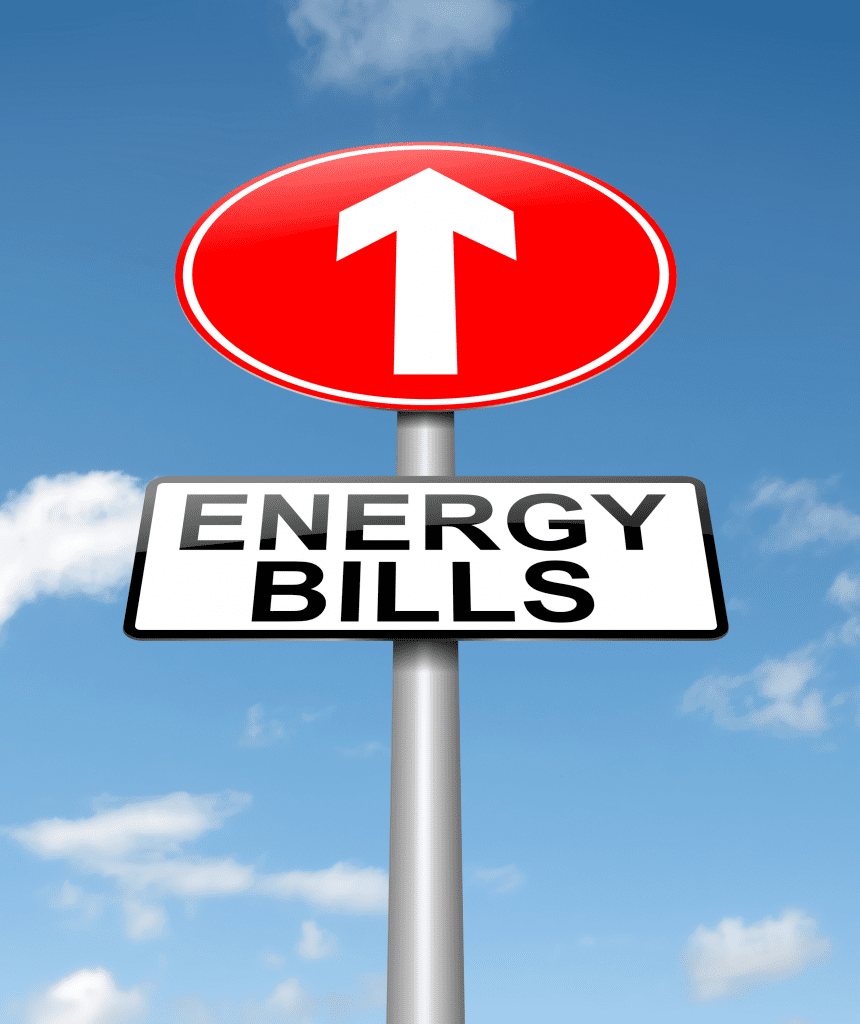Rob Anderson from D&A Procurement talks about the reasons behind the recent UK energy price hikes. It’s not as straightforward as you may think but it’s useful to understand the rationale behind these price rises.
The cost drivers of a typical business energy bill
Your energy supplier is solely responsible for your gas and electric bill even though there are six cost elements that make up that bill, the Wholesale, Transmission Network, Distribution Network, Government Schemes, Taxes and Operating costs, known in the Industry as ‘The Energy Cost Chain’ of which the supplier can only control the Wholesale and Operating costs, so when costs in the other elements rise or fall they are passed on or taken off by them.
Wholesale costs
The wholesale cost of your energy bill is roughly 50%-60% for gas and 35%-40% for electric of the total bill for the commodity you are demanding and using. The oil and European gas prices have been a big influence in rising bills over the past 12-18 months, because in GB we source 50% of our gas from outside the North Sea basin, 20% from Norway and 30% from European markets or Liquefied Natural Gas (LNG), so 50% of the gas used in this country is linked to global markets, so driven by global events.
40% of our annual electricity generation comes from gas fired power stations, so recent higher electricity prices are due to the electricity producers having to buy their gas at a higher price. Other drivers are, EU/UK carbon pricing, weather, coal import prices and renewables generation in the market of which 30% of our electricity mix is now renewable and rising.
Transmission & Distribution network costs
The transmission networks running the length of the country are high voltage electricity and high-pressure gas systems that transport each commodity, owned by National Grid and a few other entities in Scotland. This element is a very small proportion of the bill 1%-3% for gas and 5%-10% for electric.
The distribution networks feed the gas and electric to the customer at a much higher cost of 15%-20%, because as you step down the voltage and pressure you lose some of that commodity on the system due to the number of connections for every business and household.
Transmission and distribution costs are rising each year, because network companies are being allowed to recover more of their infrastructure investment from building more assets to connect to wind farms, solar farms and over the next 5-10 years charging spots for electric vehicles.
Government Scheme Costs
Government Scheme costs are levied on the energy supplier and then on the bill, 0%-5% for gas and 20%-25% for electricity, which is higher due to the re-engineering required to meet schemes like the Energy Company Obligation (ECO), Feed-in Tariffs (Fits), Smart Meter Rollout, Contract for Difference (CfD) incentive to support renewable subsidies, Capacity Market and Renewables Obligation (RO).
Tax costs
Tax costs for both gas and electric are 5%-25% of the total bill and if a business pays 20% VAT it will pay the Climate Change Levy (CCL), which is a tax on the consumption of gas and electricity usage, designed to encourage energy efficiency. CLL is roughly 5%, but prices have risen significantly by 67% for gas and 45% for electric since 1st April 2019.
Operating Costs
A suppliers operating costs for both gas and electric are 1%-8% of the total bill and the Standing Charge is the most controversial, which is a fixed daily rate for supplying you with energy, meter reading and the logistics of keeping you connected to the network, that varies from supplier to supplier and back in 2016 Ofgem proposed changes to remove it, but most continue to add it, although there are on-going talks about capping it and some will now remove it if you meet their certain criteria.
Where are costs heading? What can you do to help your business?
Transmission Network, Distribution Network and Government Scheme costs are known as ‘Non-Commodity Costs’ and market reports predict a 20% rise from 2017 to 2023, so even if the wholesale gas and electric prices go down you are still likely to see cost rises in your business energy bills, so seeking the advice and help of a professional in the industry to discuss the different options available to your business could be your best bet.
D&A Procurement offers companies personal Energy Consultancy Services, specialising in Energy Contract Management, at no direct cost to them, so to discuss your business energy needs, contact Rob Anderson on 07956 311336 or email us via www.daprocurement.co.uk
